
Chhay-dam drum dance performance of Khmer people in Tay Ninh at the 2023 Vietnam Folk Arts and Culture Festival held in Ho Chi Minh City.
Unique art of Chhay-dam drum dance
When mentioning Tay Ninh , those who love this land all remember Ba Den Mountain, the special national relic of the Central Office of the South, the Cao Dai Holy See of Tay Ninh, Trang Bang sun-dried rice paper, vegetarian dishes and are attracted by the strange appeal of the Chay-dam drum dance art of the Khmer people who have long lived in this land.
Stemming from pride, the Khmer people, along with other ethnic groups living in Tay Ninh province, strive to preserve and promote it. First, Chhay-dam drum dance is considered a form of traditional education for the Khmer people, helping to convey the cultural, religious, ethical and historical values of the nation to future generations.
Along with that, Chhay-dam drum dance also reflects the life of the Khmer people, with historical situations, legends and myths recreated in the stages of the dance. In particular, Chhay-dam drum dance is also an art form expressing honor and offerings to the gods, ancestors, kings and heroes of the Khmer people.
With such diverse and profound meanings, Chhay-dam drum dance has become an indispensable part of the traditional culture of the Khmer people in Tay Ninh and neighboring provinces and is considered an important cultural heritage of Vietnam.
According to recorded documents, in the process of forming and developing the Chhay-dam drum dance in the province, it was initially from around 1953, when Cambodian Prince Sihanouk presented the Holy See with a set of Khmer musical instruments including a sampan, two pentatonic instruments, a rice drum, two war drums, a silver snake and three Chhay-dam drums. At first, the drums were only used to beat the rhythm for rituals at the temple, later gradually there was a combination between drum dance and dragon and unicorn dance. Later, the Chhay-dam drum was created with additional styles of playing with elbows, knees and heels. In addition, there were also rolling and rolling back dances.
From those three original drums, now the Chhay-dam drum set of the Khmer people in Truong An hamlet, Truong Tay commune has 25 drums. The drum dance has also become more diverse and flexible. In particular, this dance does not need music like other dances, but dances with the rhythm of wooden drums played by hands and feet. This is a unique folk dance, only Tay Ninh has it, so it has been recognized as a national intangible cultural heritage, although this type is still being preserved and passed down in the Khmer ethnic community in some provinces in the Southwest region.
However, compared to other localities, the Chhay-dam drum dance in Tay Ninh shows its own identity. The difference with the Chhay-dam drum dance of the Khmer people in the Southwest lies in the rhythm, melody, sound, movements and costumes.
In terms of melody and rhythm, the Chhay-dam drum dance of the Khmer people in Tay Ninh province only has the performance of the Chhay-dam drum. The main rhythm is "cắc tum tum", "tum tum thup", "cắc tum tum" hitting the junction between the wall and the drum surface, "tum tum thup" hitting directly on the drum surface. The rhythm is sometimes fast, sometimes slow, sometimes gentle, sometimes showing strength. Meanwhile, the Chhay-dam drum dance of the Khmer people in the southwestern provinces has the participation of string instruments, clapping, breathing and self-resonating instruments such as: "đàn co", "đàn T-ro", "đàn khum", "đàn Tà khe", "đàn Rôn-ie-êtek", "đàn Sờ cua"... The rhythm is even, with little change, light tone, few changes in beat and rhythm. This creates a diverse "orchestra" but cannot express the outstanding unique identity of the Chhay-dam drum.
Therefore, in terms of sound, the Chhay-dam drum dance of the Khmer people in Tay Ninh is the sound coming from the drum, bustling and exciting, expressing the strength of the martial art; while the Chhay-dam drum dance of the Khmer people in the southwestern provinces is a mixture of the sounds of musical instruments, bustling and expressing the literature.
The makeup in the Chhay-dam drum dance of the Khmer people in Tay Ninh is like everyday life, close and simple; while the Chhay-dam drum dance of the Khmer people in the southwestern provinces has masks, which is fictional.
The movements in the Chhay-dam drum dance of the Khmer people in Tay Ninh are strong, with choreography like martial arts, the feet move decisively, the hands jump quickly, the body gracefully somersaults, looking very skillful and beautiful. Meanwhile, the Chhay-dam drum dance of the Khmer people in the southwestern provinces uses more hand movements than foot movements.

"Child artists" in Tay Ninh during a Chhay-dam drum dance practice session.
Training many generations of successors
Previously, the teaching of the students was carried out by the excellent artist Tran Van Xen (Long Thanh Bac commune). For nearly ten years now, the preservation and transmission of this performing art has also been carried out by artist May-Sym. Up to now, they have taught 30 young generations of Khmer people and other ethnic groups who want to learn Chhay-dam drum dancing, divided into 2 teams (one adult team and one youth team) with more than 25 large and small drums, performing skillfully, serving well on ethnic and religious festivals and occasions.
Artist May-Sym (born in 1964, Khmer) said he learned drum dancing at the age of 14, from artist Cao Van Chia (deceased). Up to now, he has been in the profession for more than 30 years, and is currently the Deputy Head of the Khmer Ethnic Cultural House in Truong An Hamlet, Truong Tay Commune, Hoa Thanh Town (this place is also known as Bau Ech).
Artisan May-Sym shared that the Chhay-dam Drum Team in Bau Ech was formed a long time ago, the members have changed a lot, some artists are no longer around, but the drum team members always teach each other, preserve the traditional drum dance movements and during the operation have made appropriate modifications. "The drum team was initially formed mainly to dance on holidays and festivals ( Chol Chnam Thmay , Dolta, Ok Om Bok ), worship ceremonies, welcoming the gods... gradually the drum dances appeared in community activities: meetings, activities of people in Khmer ethnic villages and hamlets", artist May-Sym shared.
At the Khmer Cultural House in Truong An Hamlet, there are currently two Chhay-dam drum teams operating quite regularly, each team has 10 or more members, the oldest actor is 60 years old, the youngest is 10 years old, there are children from 6 to 8 years old studying. These two drum teams are often invited to perform.
In addition to the above drum team, the province currently has many drum teams with hundreds of people who know how to dance. Some typical drum teams are: the Chhay-dam drum team of the Cao Dai Tay Ninh Holy See, the drum team of Truong Tay commune, the drum team of Truong Dong commune, the drum team of Long Thanh Bac commune, the drum team of Hoa Thanh town...
Nowadays, not only Khmer people know how to dance, but many Kinh ethnic actors and some other ethnic minorities such as Ta-Mun, Hoa... living in Tay Ninh province also participate, there are actors nearly 70 years old, there are actors in the age of children. Most of the participants like to practice drum dancing because the drum sounds are pleasant to the ear, the drum dancing movements are flexible, graceful, expressing strength, excitement and determination.
Nguyen Thu Ha
Source











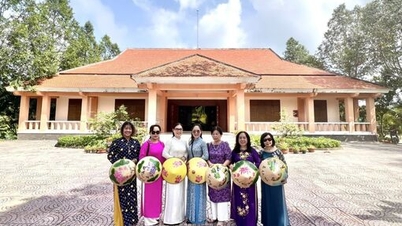








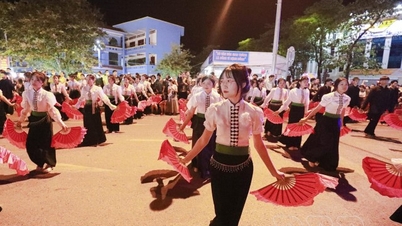




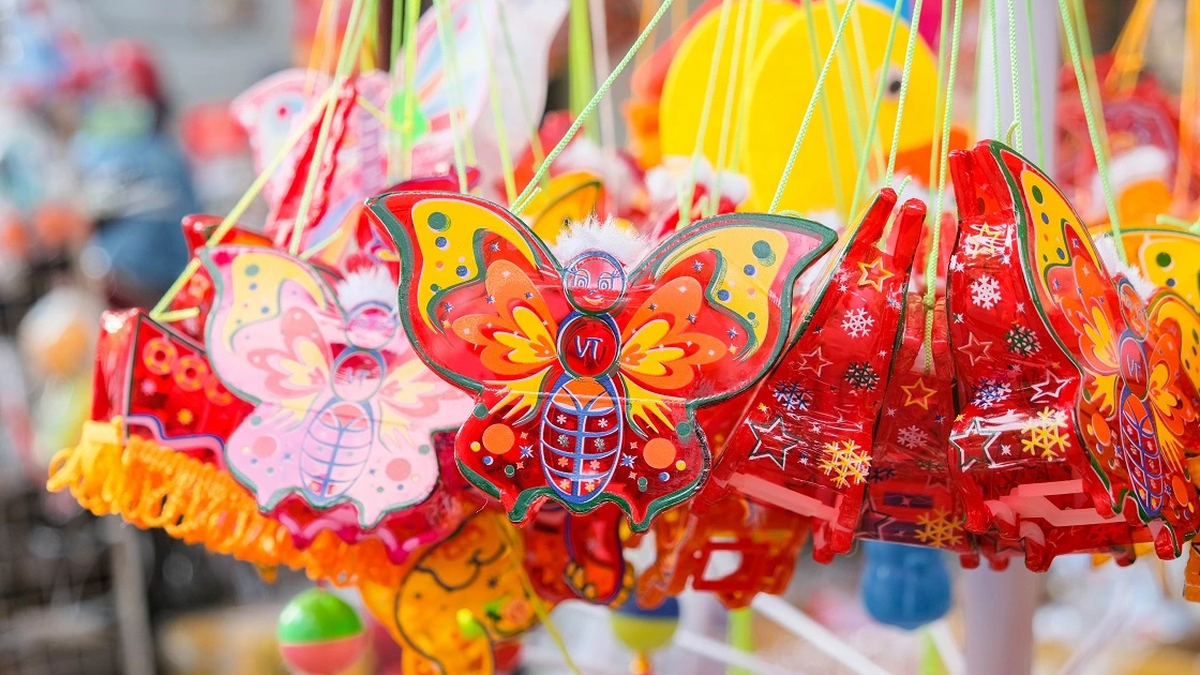



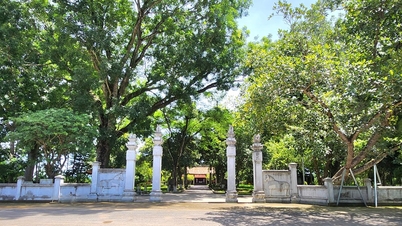
























![[VIDEO] 50 years of Petrovietnam: Keeping the legacy alive, creating national energy](https://vphoto.vietnam.vn/thumb/402x226/vietnam/resource/IMAGE/2025/9/20/dff4ddb3d15a4076ba5f67fcdc6c7189)




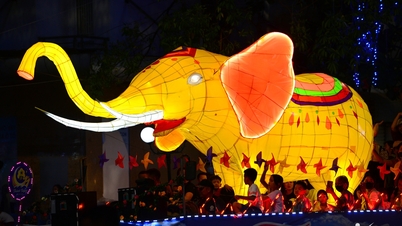




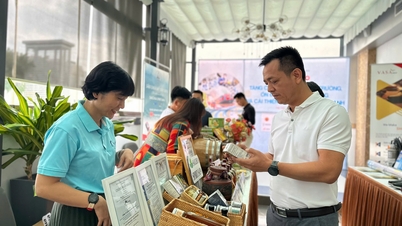














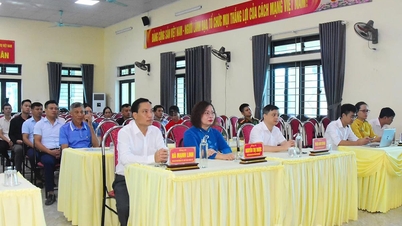
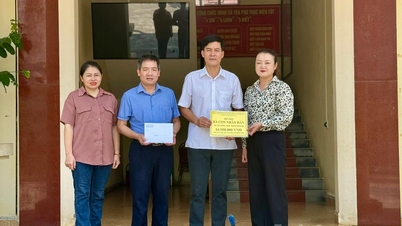




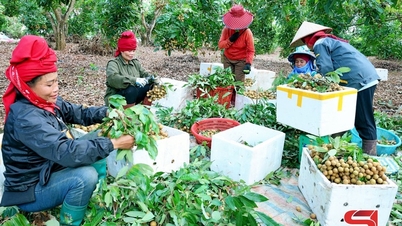








Comment (0)